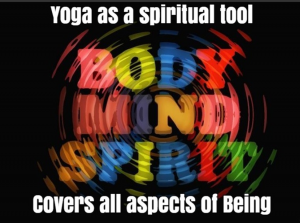For a student longing for spiritual attainment, the path of traditional, authentic Yoga may be a perfect fit, including all of the many aspects that it may encompass. However, when authentic seekers of spiritual truths start to explore the landscape of approaches, they may quickly become daunted.
Students rarely pursue Yoga as a spiritual tool because everybody “knows” that Yoga is a physical exercise or wellness program. Of course, that’s not true. It just appears that way in social media posts, videos, blogs and news stories.
It is not hard to find practitioners and workshop leaders who provide fitness and/or breath training for health and wellness reasons. Many do so without using the word Yoga or making any mention of attaining or realizing the higher union that is its core. It is commendable of these trainers for not calling their work Yoga, even though their instruction can be a fundamental part. This is as it should be.
But because of the erroneous correlations of postures (asanas) with doing Yoga, many sincere seekers aren’t finding the authentic Yoga that embodies some of the highest teachings and practices known to humanity.
 Real Yoga practice focuses on the spiritual from the very outset
Real Yoga practice focuses on the spiritual from the very outset
By following the path of authentic Yoga, students approach the attainment of spiritual realization. Additionally, they may benefit from a host of side-effects which include:
- Improved physical, mental, and emotional health
- The elimination or reduction of disease
- The promotion of a state of health and well-being
The intent of Yoga is to focus on the spiritual component from the very beginning of practice. By engaging such an authentic orientation during practice, many fruits will come, of which the physical benefits are only one part.
Sincere students need to regularly re-affirm the true nature of authentic Yoga. This is not a matter of changing the path of those who practice “adaptations” of this ancient discipline. They have a perfect right to do as they wish, even continuing with limited or isolated parts in their daily routine.
However, re-affirming the true nature of authentic Yoga and making this available to all true seekers, more people will likely be attracted to it. At least a small percentage of teachers are trying to do this by offering a wide array of venues as an introduction.
The journey of Yoga is toward Yoga, akin to a sacred pilgrimage
Imagine taking a sacred pilgrimage (Yatra) to a sacred place high in the Himalayas. During your journey you might fly on an airplane, ride in a car, and do lots of walking. As long as you maintain a heartfelt conviction for the destination, the entire journey is a pilgrimage.
It is this conviction to reach the goal, not merely the actions taken, that makes the process leading there also called Yoga. The fact that you move your body this way or that, or practice pranayama, doesn’t unto itself, constitute Yoga. It is the journey (Yatra) and the goal combined that is the union that earnest devotees seek.
Intentionally working with relationships in the external world, with your personality, your body, your breath, the levels of your mind, brings success. This enables the destination and the goal to converge in Yoga.
So, we must call into question those others who teach work with the body, breath, and mind and call their methods Yoga, especially if they’re completely ignoring the true goal or destination of authentic Yoga.
Just a reminder: the destination of Yoga is Yoga, period. Any other use of the word misrepresents the totality of union that has been intended since antiquity.
Next: We continue this discussion about Yoga and its use (and/or abuse) as a spiritual tool.
